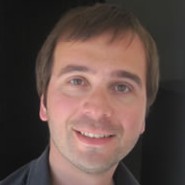The Expert is the Client
This article by Boris Matijias of Archipielago Empresa Familiar, Barcelona, outlines his method for working with the family enterprise client in an objective, clear and sincere manner. His suggests that ego take a back seat to the needs of the client and cautions advisors to steer clear of “dangerous liaisons.”
Paraphrasing Ivan Lansberg, one of the main obstacles when working as a family business consultant is the inability to overcome being seen as a savior in the eyes of the client. To do so, one must overcome personal and professional ego and create committed and meaningful relationships with the client family.
It is only through building a strong alliance, based on mutual respect and a genuine interest in the reasons that made the family business engage a consultant, will the consultant be able to create a relationship in which he/she can be seen as a significant part of the solution. Until then, the family is still the expert, having lived with the problem for some time, certainly much longer than the consultant. They have all the details and hold the keys to the solution.
Recently, I was asked to help a second generation, Argentina-based family business determine if the third generation members had sufficient knowledge and skill to occupy the highest positions in the company structure. During a series of interviews with the third generation members, a number of issues were raised, mainly related to a conflict that has been affecting the family business for many years, especially in the second generation.
While designing the evaluation process that I had been contracted to do, I was troubled by the issues that had been raised. In fact, so seriously troubled that I had difficulty, focusing on the necessary decisions related to the initial task. After thinking for some time about the complaints and the difficulties the family had experienced, I decided that I was being dragged into a process that wasn’t in the “job profile.” At that point, I remembered the advice I was given by Dr. Felix Castillo: “Never start the therapy process, unless there is a subject with a clearly structured demand.”
In other words, the first step is to distinguish between the demand and the complaint. What I was hearing were a lot of complaints regarding family dynamics and family business related conflicts, but there was only one clear demand: evaluate the third generation knowledge and skills. Once I came to this realization, my work was much easier and I was able to focus on the demand instead of being caught in the cross fire of complaints.
The difference between family therapy and family business consulting lies in the fact that family businesses mainly demand strategic advice. But there can be a catch to that demand: sometimes the family business members, especially those who sign the check, use the consultants as a part of their strategy to address internal struggles and conflicts with other family members. That’s where the confusion between the complaint and the demand is usually expressed.
To avoid being lost in the complaint-demand confusion, being seen as a savior or dragged into “dangerous liaisons,” I try to keep the focus on the following four elements: effectiveness, motivation, sincerity and simplicity.
Effectiveness is the first element of change. In order to be effective as a consultant, one must differentiate effectiveness from the efficiency. It took me quite some time to understand the importance of differentiating these, apparently similar, concepts. Then I came across Peter Drucker’s book The Effective Executive, in which he characterizes the difference in the following quote: “Efficiency is doing things right; effectiveness is doing the right things.”
The first step relates to time. The client must understand that my time involvement is related to the articulated results requested and to the solution of that specific problem. At a later date, a new process may be initiated if both sides so desire.
If the family business consultant mistakes efficiency with effectiveness, he/she will have difficulties dealing with the resistance of the system, since a focus on efficiency is probably one of the causes of the system’s dysfunctionality.
The point here is that the clients are the experts in maintaining the efficiency of the problem; what they need is someone who can be effective with the solution to the presenting problem. Someone to do “right things.”
The second point is motivation. The consultant’s motivation comes from what he/she is capable of doing. If the work performed is not efficient, motivation will fade and will be absorbed within the problem and the structure that generates the problem. The consultant’s task is to produce ideas, concepts, information and knowledge that help the client formulate the efficient strategy to overcome obstacles and facilitate change.
Unless the consultant is motivated, it is practically impossible to establish an alliance that allows the consultant to be seen as a significant person from whom the family business can benefit and induce change.
This motivation is highly related to the leadership capacity. In my work, I feel I should be able to radiate trust and confidence to create the teamwork; which is not to be confused with “team work.” Since the consultant’s work is time limited, it is important to let the family know that our time must be related to the specific task. The consultants’ goal is not to become the team member; but rather the facilitator of the dynamics that help the team achieve better results.
The third point that helps me work with the family is sincerity. It is a fundamental part of the trust building relationship, on which the whole future process depends. During the two past decades of economic prosperity in Spain, there have been certain practices that created a prejudicial view of the family business consulting profession. Such practices have mainly been conducted through “hyper production” of family business constitutions (protocols) and other documents and services which some have perceived as excessive.
Some of these documents were made as the “one size fits all” solutions, without the work of exploring the business size and structure, and without analyzing the family dynamics or actually listening to the client’s demand. Once again, this comes from the professional ego, which lacks the modesty to acknowledge that the client is the expert in the problem.
The fourth point is simplicity. As Steve Jobs once said: “You have to work hard to make your thinking clear, to make it simple.” On a practical level it can be seen in the anecdote of the mechanical engineer who is engaged to fix a highly sophisticated engine that stopped working. The engineer spends some time analyzing, observing and testing the machine and after a short period of time, takes a small hammer and gently hits one small part, turns the key and the engine starts to work.
The client is thrilled, but only until the engineer gives him the invoice. “There must be a mistake! This is a lot of money for only small hit with the hammer!” says the client. “No, sir. The hammer hit is for free. What’s in the invoice is the knowledge of where, how, when and why hitting on that exact spot.”
I find these four points useful in working with the complex structure of a family business. The guidelines from this article help me overcome my ego and accept the fact that until I can demonstrate effectiveness, motivation, sincerity and simplicity, the client will remain the only expert in the problem.
About the Contributor
 Boris Matijas is founder and director of Archipielago – Editorial Platform for Family Business. He is a publisher, writer and editor specializing in family business. Boris is a member of the FFI Practitioner editorial committee, editor of “Family Business Transformation,” ESADE Business School and partner with Family Business Chair, IESE Business School. Boris can be reached at boris.matijas@empresafamiliara-z.com
Boris Matijas is founder and director of Archipielago – Editorial Platform for Family Business. He is a publisher, writer and editor specializing in family business. Boris is a member of the FFI Practitioner editorial committee, editor of “Family Business Transformation,” ESADE Business School and partner with Family Business Chair, IESE Business School. Boris can be reached at boris.matijas@empresafamiliara-z.com
Stay tuned next week for another issue of The Practitioner.
Yours in Practice,
The Practitioner





